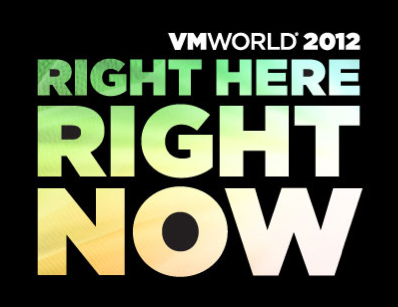
 VMware has announced its latest update to version 5.5 of its global virtualisation powerhouse, vCloud Suite.
VMware has announced its latest update to version 5.5 of its global virtualisation powerhouse, vCloud Suite.
I would say that this is an evolutionary rather than revolutionary update being the third major release in the vSphere 5 family (5.0,5.1,5.5).
There are however some significant storage additions such as Virtual SAN (VSAN) and VMware Virtual Flash (vFlash) as well as a new vSphere App HA to provide application software high availability which is in addition to vSphere HA.
VMware has also responded to the customer frustration over Single-Sign on (SSO) which is an authentication proxy for vCenter and made some changes to SSO to hopefully make it easier to deploy. Every component of the suite has been updated in some way which is an impressive undertaking to get everything in sync.
Here are all the details:
- What’s New in vCloud Suite 5.5: Introduction
- What’s New in vCloud Suite 5.5: vCenter Server and ESXi
- What’s New in vCloud Suite 5.5: vCenter Server SSO fixes
- What’s New in vCloud Suite 5.5: Virtual SAN (VSAN)
- What’s New in vCloud Suite 5.5: VMware Virtual Flash (vFlash)
- What’s New in vCloud Suite 5.5: vCloud Director
- What’s New in vCloud Suite 5.5: vCenter Orchestrator
- What’s New in vCloud Suite 5.5: vCloud Networking & Security
- What’s New in vCloud Suite 5.5: vSphere App HA
- What’s New in vCloud Suite 5.5: vSphere Replication and vCenter Site Recovery Manager
VMware is certainly evolving their strategy of the software defined data center, this release puts software defined storage (SDS) on the map at least from a VMware perspective, a multi-year project. VMware vVolumes hasn’t made it into this release which shows what a major undertaking it is, we will have to wait for vSphere 6!
SDS is going to have a huge push this year from VMware and of course all the other storage vendors, expect some exciting innovation.
Software defined networking is the next traditional IT infrastructure piece to “Defy convention” and is arguably by far the hardest one to change. Another multi-year project is just beginning.
Categories: ESX, Update Manager, vCenter, vCloud Director, vCOPS, View, VMware, VMworld Tags: esx, esxi, networking, storage, UpdateManager, vCD, vcenter, vcops, view, vmware, vmworld
VMware and HP have both released advisories which say you shouldn’t use HP Virtual Connect in tunnel mode if you are using vCloud Director Network Isolation (vCDNI) which is MAC-in-MAC encapsulation.
There are two network modes available with Virtual Connect, Tunnel Mode and Mapped Mode.
When using Tunnel Mode, Virtual Connect passes all tagged and untagged packets through the Virtual Connect switch down to select blades where the VLANs are split into port groups. The uplinks are therefore considered dedicated uplinks as control over which VLANs are trunked is done at the upstream switch and so you can’t have a different set of VLANs going to Blade 1 and Blade 2 while still utilising the same uplinks. You could obviously have separate sets of uplinks for Blade 1 and Blade 2 to achieve this. The advantage of tunneling mode is only having to specify your VLANs once at the upstream switch and being able to pass all VLANs down the same trunk to multiple blades and only having to manage VLANs at the upstream switch and port groups on the ESXi host or within the vSphere Distributed Switch.
In Mapped Mode mode, the Virtual Connect switch examines all the VLANs and by defining Ethernet Networks for each VLAN on the Virtual Connect switch you can selectively pass down all or some of the VLANs down to the blades. The uplinks are considered shared as you can trunk all VLANs you will need for any blade and for example have some VLANs going to Blade 1 and other VLANs going to Blade 2 but sharing the same uplinks. In order to do this you have to create separate Ethernet Networks for every VLAN (possibly two for redundancy) and manage VLANs at both the upstream and Virtual Connect switches as well as port groups on the ESXi host or within the vSphere Distributed Switch.
Read more…
 VMware’s US mega conference, VMworld kicks off in San Francisco in just over 2 weeks time. 19000 people attended in Las Vegas last year (we will have to see whether the choice of venue affects the numbers for this year!)
VMware’s US mega conference, VMworld kicks off in San Francisco in just over 2 weeks time. 19000 people attended in Las Vegas last year (we will have to see whether the choice of venue affects the numbers for this year!)
This will be my first time attending VMworld US as living in London I have attended VMworld Europe previously so am excited to see the differences, enjoy the bigger conference and meet some more fellow vExperts and other community members.
There’s obviously a huge amount that goes on at the conference from the keynote speaches, breakout sessions, panel discussions, labs, formal and informal meetings, and general networking so working out what to actually see with so much going on is harder than many people would assume.
Read more…
Categories: ESX, vCenter, vCloud Director, vCOPS, VDI, VMworld Tags: networking, storage, vCD, vcenter, vdi, vmware, vmworld
 VMware has released what at first looks like a minor update to their PowerShell snapin, PowerCLI to version 5.01. Although just a .01 release which brings the usual changes and bug fixes which are listed here, the big news is that VMware has added a whole bunch of cmdlets for managing vCloud Director.
VMware has released what at first looks like a minor update to their PowerShell snapin, PowerCLI to version 5.01. Although just a .01 release which brings the usual changes and bug fixes which are listed here, the big news is that VMware has added a whole bunch of cmdlets for managing vCloud Director.
A whole new snapin has been created called VMware.VimAutomation.Cloud and this initial release focuses more on the reporting side, so being able to retrieve information from vCD rather than setting things but also does have cmdlets for importing VMs, Templates and .OVFs from vSphere into your vCD environment. This is a great step forward as cloud computing relies so much on automation and having PowerCLI also available means you have so many more options to tie together your automation workflows.
Read more…

 VMware has announced its latest update to version 5.5 of its global virtualisation powerhouse, vCloud Suite.
VMware has announced its latest update to version 5.5 of its global virtualisation powerhouse, vCloud Suite.


Recent Comments